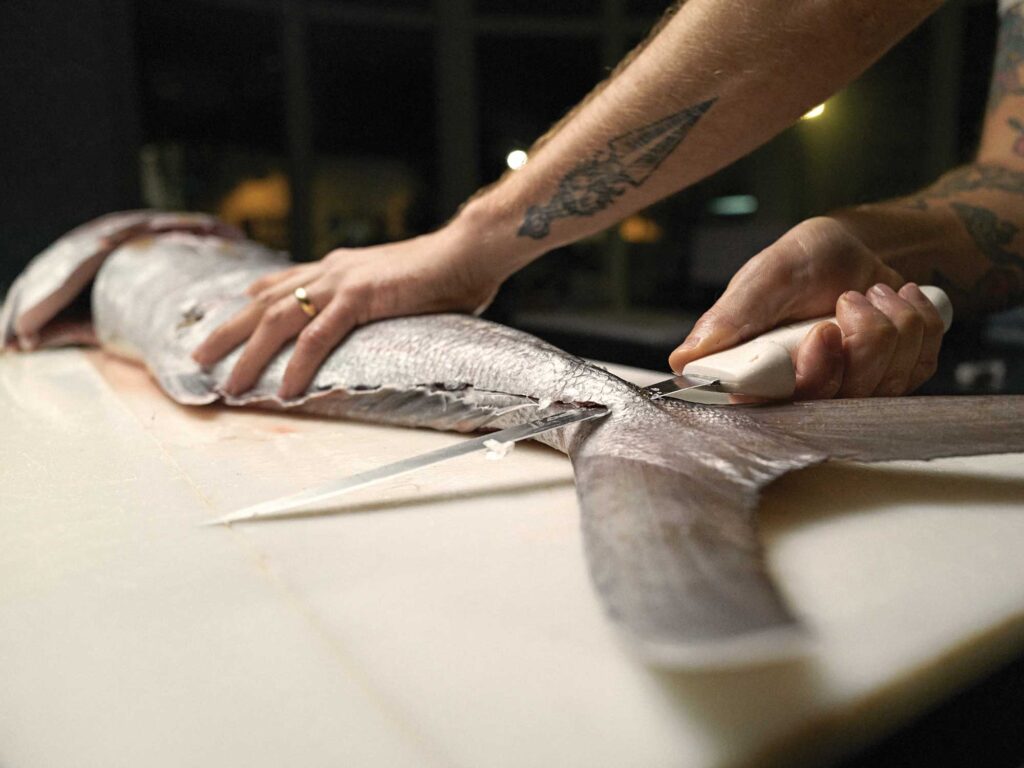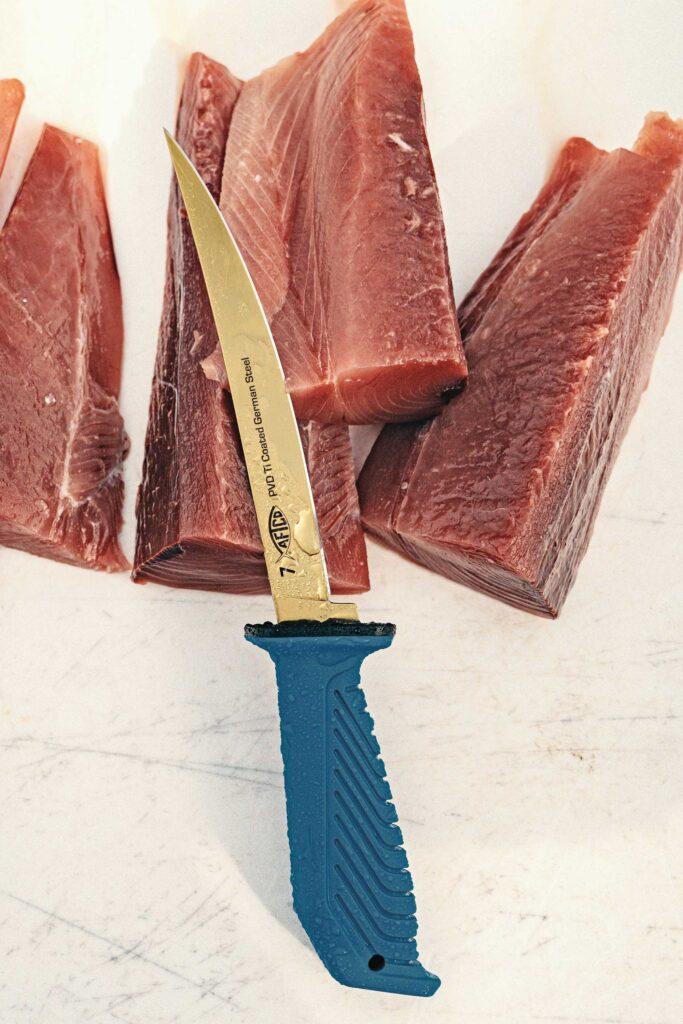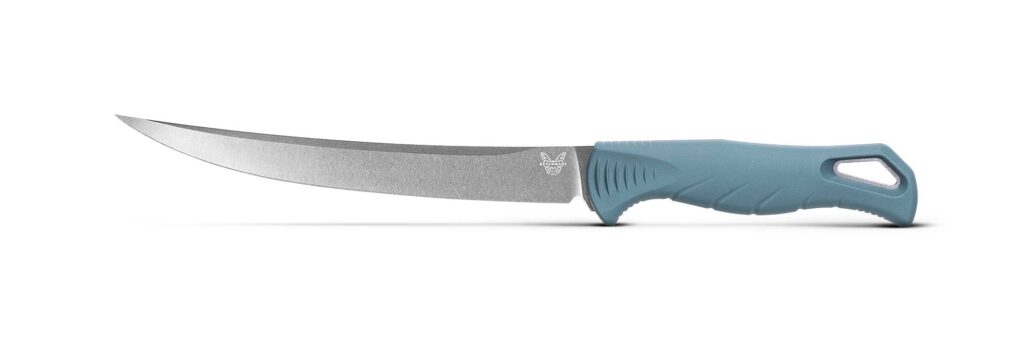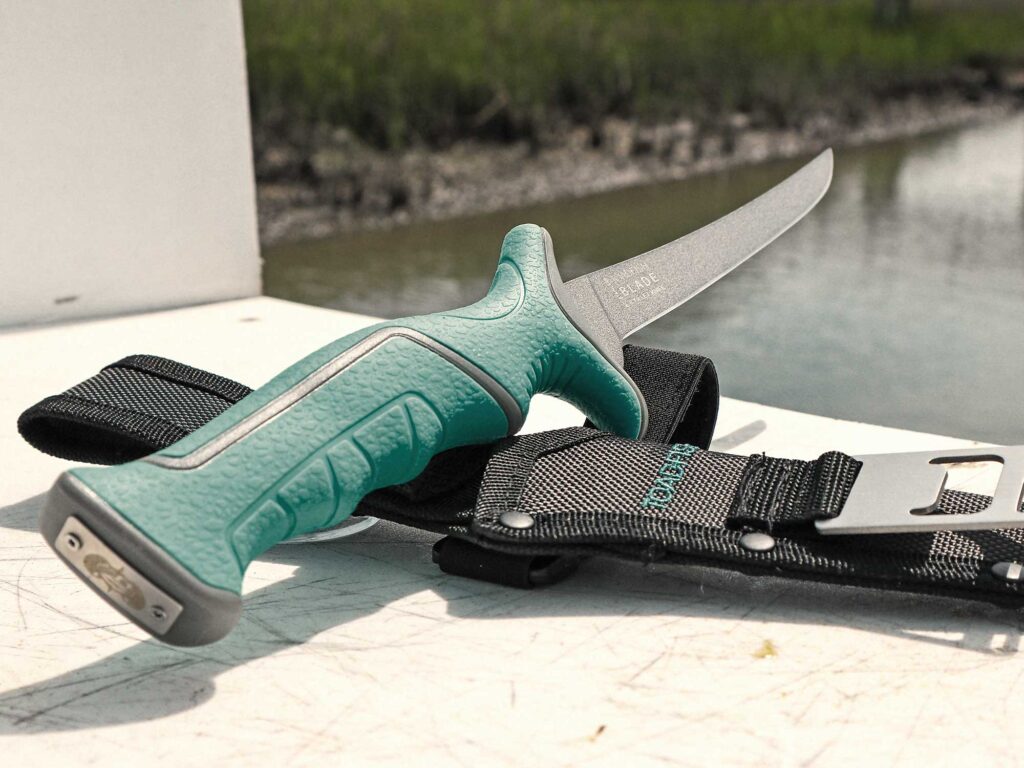
One of the best parts of fishing is the delicious meals that come from a productive day on the water. To ensure your catch makes excellent table fare, you should kill the fish immediately, clip the gills to allow it to bleed out, and place it in an ice and saltwater mixture to bring the temperature down quickly. Once back at the dock, you can turn those hard-caught fish into tasty fillets—provided you have the right knife.
To get an idea of what you need in a fillet knife, we spoke with contributor Reed Brand, also known as Reed the Fishmonger. Since 2020, Reed has been posting short social media videos of himself filleting fish at Captain Clay & Sons Seafood Market in Delray Beach, Florida.
He’s learned a thing or two about what qualities he likes to see in a knife. Though I personally use different-size blades when dealing with different-size fish, Reed prefers to use one knife for just about everything.
“I use a 7-inch blade for everything from 300-pound swordfish down to 1-pound snapper,” Reed explains. He opts for a Dexter 7-inch flexible fillet knife, and after thousands of hours, he’s become pretty handy with the blade. He has found the size well-suited to making the variety of cuts needed to appeal to customers at his market, and the flex helps him get the most out of each fish.
“When filleting fish, I utilize the broad side of the knife to get to the center spine,” Reed explains. “The flat portion of the blade traces along the backbone well, but the tip is better suited to separating the fillet from the ribs. Having some flex helps trace the ribs down to the loin, getting it all off the bones. It also comes in handy when it’s time to do the second side of the fish. Absent the first fillet, the fish no longer lies flat. So having a blade with a bit of flex helps follow the contours and separates the meat from the rest of the carcass.”
Read Next: Surprise Fish Species That Taste Great
Though there are serrated blades on the market, Reed uses a straight edge for just about everything, with one exception. “I will use a serrated blade when cutting steaks. It helps keep my other blades sharp by sparing them from the bone.” But Reed notes that a serrated blade might be helpful for those lacking his experience because these blades can typically get through tough skin much easier than a straight edge. So grab a straight blade, but feel free to experiment with a serrated edge if you find you have to put too much oomph into each cut.
In regards to steel choices, you can select from stainless- and carbon-steel varieties. Stainless, as the name suggests, is less prone to staining or rusting. But it does so at the expense of sharpening ability, as the harder steel is more difficult to form with sharpening stones or rods. Steels that are high in carbon are much softer and take an edge much more easily. But they are more prone to rust, so you have to keep them clean and dry. I’ve always found a wipe down with some olive oil keeps rust at bay until the next use, even for the blades I leave in my friend’s fish house.
The market is filled with a variety of excellent fillet knives. Here’s a selection of some of the better models out there to help you make your pick.

AFTCO 7-Inch Flexible Fillet Knife
AFTCO builds its fillet knives in conjunction with German knife-making legend Böker, so you can expect quality. The full-tang Böker 4116 German stainless-steel blade utilizes a subzero quench process that results in 56-58 Rockwell hardness for excellent edge retention. AFTCO’s Gold TIN/PVD treatment ensures corrosion resistance, even around salt water. $79

Dexter 7-Inch Sani-Safe Flexible Fillet Knife
Dexter’s line of fillet knives can be found in just about every fish-processing house from the Keys to Alaska. The high-carbon content makes the blades easy to sharpen, and they seem to hold their edge well even during a long session. The Sani-Safe handle provides a grip even when wet, and it cleans up easily. $38

Bubba 7-Inch Tapered Flex Fillet Knife
Bubba’s fillet knives might be best known for their grippy handles, but the blades are pretty great too. The flexible blade is coated in a Teflon finish, so it glides through fish with minimal friction and cleans up easily. The handle also features safety guards to protect you from the blade and fish spines. $75

Benchmade 7-Inch Fishcrafter
You probably know Benchmade from its line of hunting and everyday-use knives, but it made a splash in the world of fillet knives with the Fishcrafter earlier this year. The blade is made of its CPM-MagnaCut steel, which offers plenty of corrosion protection with just the right amount of flex. A Santoprene handle provides plenty of grip when wet. $240

Toadfish 7-Inch Fixed Fillet Knife
In addition to its cool folding fillet styles, Toadfish makes a fixed blade also built to travel. The 8CR14 high-carbon stainless blade with a titanium coating rides in a unique sheath that can attach to a nonporous surface, like your center console, via a suction cup. Or use the neoprene strap to affix it to a T-top. $30









